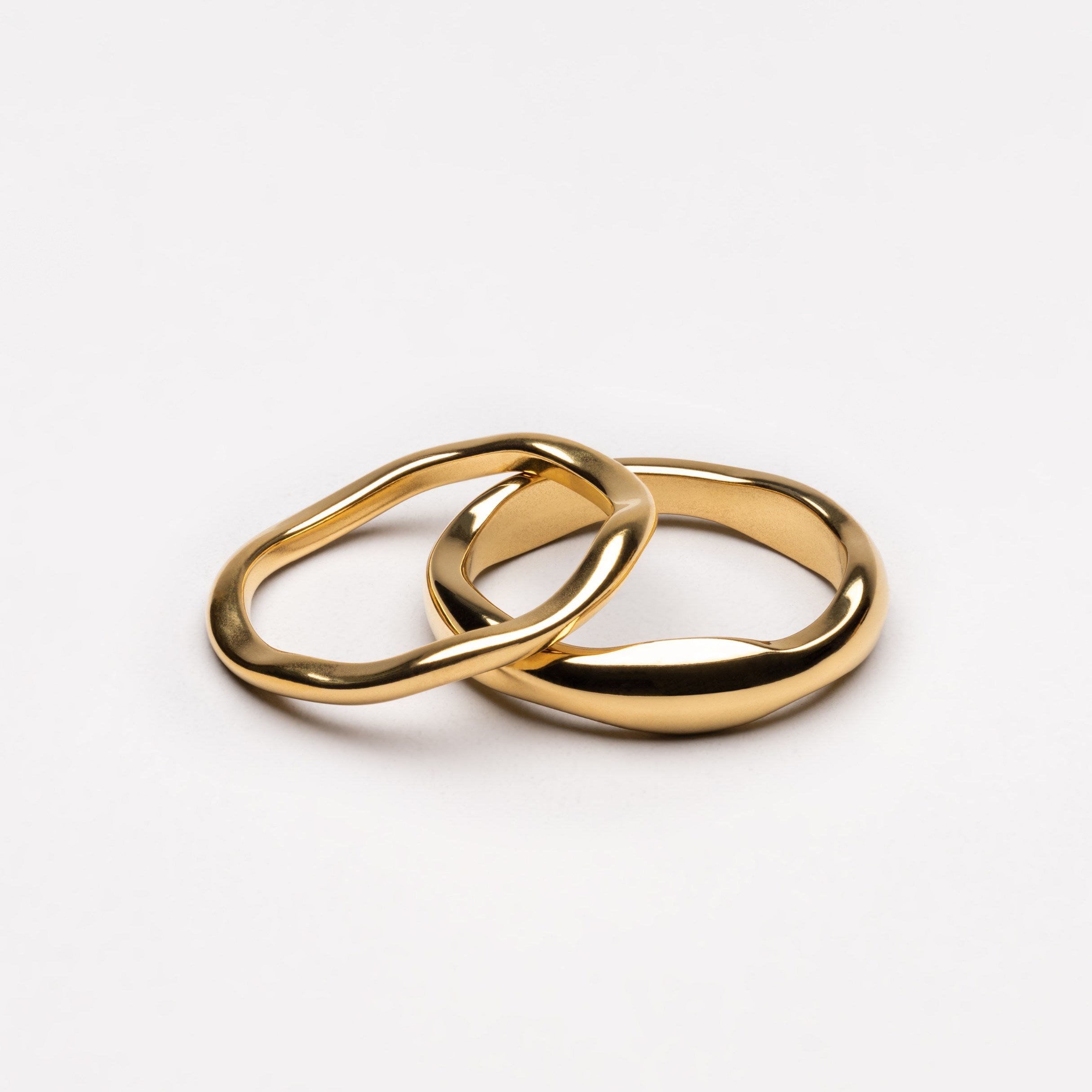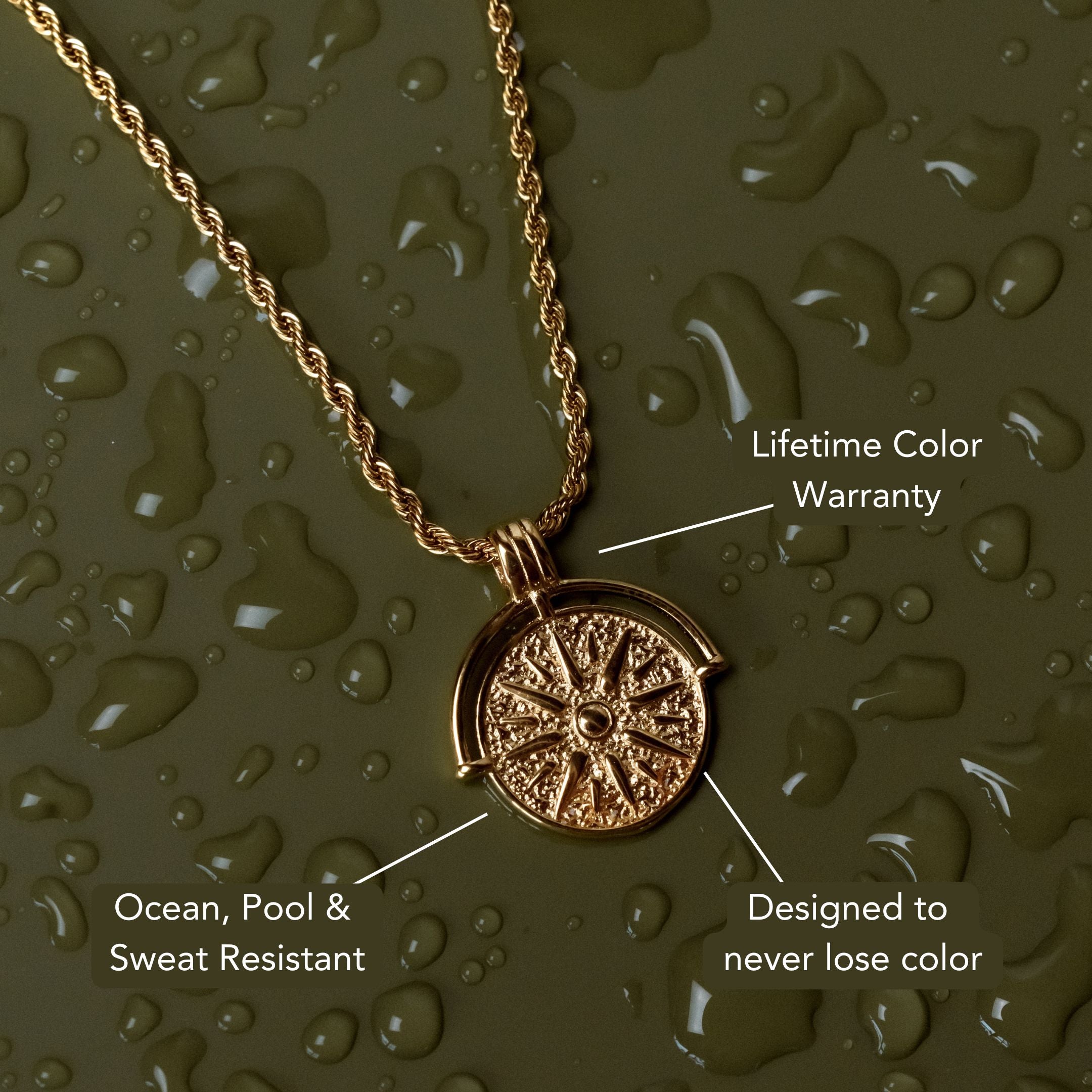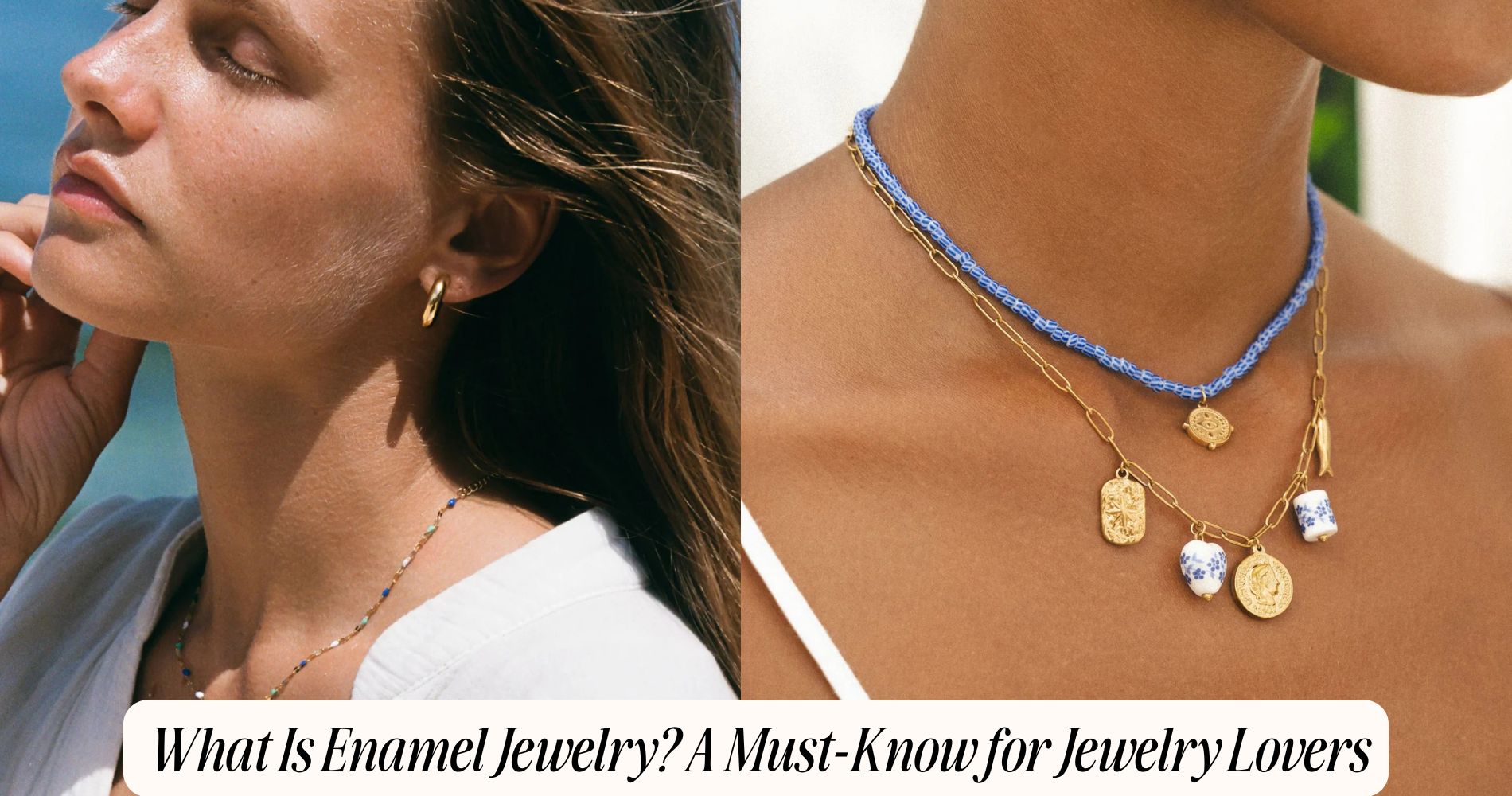
What Should You Not Clean Jewelry With: Simple Guide
What should you not clean jewelry with? The answer includes a long list of common household items that can do more harm than good. Avoid using bleach, ammonia, toothpaste, baking soda, vinegar, and abrasive materials like scouring pads—these can scratch metals, wear down finishes, and discolor gems. Even paper towels can leave behind fibers or cause tiny abrasions. Steer clear of letting perfumes, hairspray, or lotions come into contact with your jewelry, as they leave residue and dull the shine. Taking proper care—and avoiding harsh cleaners—helps maintain your jewelry’s beauty, especially if you love delicate pieces like those in our Cute Earrings collection. There’s much more to explore.
Household Cleaners That Can Damage Jewelry
Although many household cleaners seem harmless, several contain harsh chemicals that can severely damage your jewelry. Products with ammonia, chlorine, or strong acids can erode metal alloys, discolor gemstones, and weaken settings.
Even common cleaners like window sprays or all-purpose solutions may leave residues that tarnish or pit delicate surfaces. When cleaning jewelry with soap solutions, always choose a mild, pH-neutral liquid soap mixed with lukewarm water.
Avoid abrasive powders or scouring pads, as they scratch metals and gems. After cleaning, make certain you rinse jewelry thoroughly and dry it with a soft cloth to prevent water spots or mineral deposits.
Storing jewelry properly is equally important; keep pieces in a dry, separate compartment to avoid scratches and chemical exposure from everyday household substances.
Why Bleach Is a Big No for Jewelry Cleaning
Among all the household cleaners that can damage jewelry, bleach poses one of the greatest risks. When you expose your jewelry to bleach, you initiate harmful chemical reactions that can permanently alter metals and gemstones.
Bleach dangers include the rapid breakdown of alloys in gold and silver, leading to pitting, discoloration, or even structural failure. Platinum isn’t immune either—bleach can make it brittle over time.
If your jewelry contains stones, bleach may erode or cloud their surfaces, diminishing brilliance. Even a brief exposure can cause significant, irreversible harm.
You should never use bleach, even in diluted forms or cleaning wipes, on any jewelry. To preserve your pieces’ value and integrity, always avoid products that contain bleach or similar harsh oxidizing agents.
The Risks of Using Toothpaste on Precious Metals
While toothpaste is often advertised as a gentle abrasive, it's far too harsh for cleaning precious metals like gold, silver, or platinum. Toothpaste dangers stem from its gritty texture, which can create microscopic scratches on metal surfaces.
Over time, these abrasions dull the shine and may even accelerate metal tarnishing, especially with softer metals like gold. The chemical composition of toothpaste—containing whitening agents and detergents—can also react with metals, causing further discoloration or weakening soldered joints.
Even if you don’t see immediate damage, repeated use compounds the problem, leading to irreversible wear that diminishes your jewelry’s value and appearance. For proper care, always avoid using toothpaste and opt for products specifically designed for jewelry cleaning to preserve your precious items’ longevity.
Harmful Effects of Baking Soda on Soft Gemstones
Even though baking soda is a common household cleaner, it poses significant risks to soft gemstones such as opals, pearls, turquoise, and amber. You should avoid using it on these stones because their high gemstone porosity makes them vulnerable to damage.
Baking soda’s abrasive particles can scratch and erode the delicate surfaces, dulling their natural luster. Soft gemstones often absorb substances from their environment, so baking soda can penetrate and cause internal discoloration or structural weakness.
Additionally, if your jewelry includes metals, baking soda may react and accelerate metal tarnish, especially on settings made from silver or gold alloys. For these reasons, you should always choose gentler cleaning methods for soft gemstones to preserve their beauty and structural integrity over time.
Avoid Ammonia-Based Solutions for Certain Pieces
Although ammonia-based solutions excel at dissolving grime and restoring shine to many types of jewelry, they can irreparably harm certain pieces. You should never use ammonia on jewelry containing porous gemstones like pearls, opals, turquoise, and emeralds.
The chemical’s harsh nature can cause discoloration, surface damage, or even structural weakness in these delicate stones. Ammonia risks extend to antique or heirloom jewelry, where older settings and metals may react unpredictably, leading to brittleness or loosening of stones.
For jewelry safety, always check the composition of your piece before choosing a cleaning method. If you’re unsure, opt for gentler alternatives like mild soap and water. This precaution protects not only the gems but also the integrity and longevity of your treasured items.
Dangers of Ultrasonic Cleaners for Fragile Jewelry
Because ultrasonic cleaners use high-frequency sound waves to agitate a cleaning solution, they can dislodge dirt from intricate jewelry settings with remarkable efficiency.
However, if you’re considering using one, you should know ultrasonic dangers are significant for fragile jewelry. Delicate gemstones like opals, emeralds, and pearls are especially vulnerable—these vibrations can cause internal fractures, loosen settings, or even shatter softer stones.
Glue-set jewelry is at risk as well, since the agitation can dissolve adhesives, causing stones to fall out.
Vintage or antique pieces with delicate soldering or enamel work may also be damaged by the intense vibrations.
For fragile jewelry, it’s always safer to opt for gentle hand cleaning methods instead of risking irreversible harm with ultrasonic cleaners.
Abrasive Materials That Cause Scratches
When you clean jewelry, selecting the right tools and materials is essential to prevent scratching delicate surfaces. Never use abrasive materials such as rough sponges, scouring pads, or gritty powders, as these can cause irreversible metal scratches and surface damage.
Even seemingly soft items like paper towels may contain fibers that abrade metals and gemstones over time. Instead, opt for a soft, lint-free cloth or a brush with ultra-fine bristles specifically designed for jewelry.
Abrasives not only dull the finish of precious metals but can also weaken prong settings and increase the risk of stone loss. Always avoid household cleaning products that contain micro-abrasives, which may not be visible but can still harm your jewelry’s appearance and structural integrity.
Why Vinegar Isn’t Always Safe for Jewelry
While steering clear of abrasive materials protects your jewelry from scratches, it's just as important to contemplate the chemical effects of cleaning agents like vinegar. Despite its popularity as a household cleaner, vinegar hazards are a real concern when it comes to jewelry safety.
The acetic acid in vinegar can react with metals such as gold, silver, and platinum, leading to corrosion or a dull finish. If your jewelry contains porous gemstones—like pearls, opals, or turquoise—vinegar can cause irreversible damage, eroding surfaces and weakening adhesives.
Even settings and soldering joints may become compromised over time. For these reasons, you should avoid using vinegar on most jewelry types.
Opt for gentler, non-acidic cleaning solutions specifically designed to ensure jewelry safety and longevity.
The Problem With Paper Towels and Tissues
Although paper towels and tissues seem convenient for quick cleanups, their fibrous texture poses a significant risk to your jewelry’s surface. When you use paper towels, the rough fibers can create micro-scratches on metals and even dull the luster of gemstones over time.
Despite the perception of tissue softness, most tissues still contain small wood fibers and additives that are abrasive at a microscopic level. This abrasion gradually erodes polished finishes and may trap particles that further scratch delicate surfaces.
If you want to preserve your jewelry’s original brilliance, avoid using these common household items. Opt instead for a lint-free, microfiber cloth specifically designed for jewelry care. This ensures that you’re cleaning effectively without exposing your valuable pieces to unnecessary wear and tear.
How Perfume and Hairspray Affect Jewelry Shine
Because common beauty products contain chemicals that interact with precious metals and gemstones, your jewelry’s shine can quickly diminish if exposed to perfume and hairspray.
When you spray perfume, alcohol and aromatic compounds can settle on jewelry surfaces, causing perfume damage. These chemicals may result in dullness, discoloration, or even erosion of soft gemstones and precious metal coatings.
Similarly, hairspray effects are problematic; polymers and resins in hairspray leave a sticky residue that traps dust and grime, reducing brilliance and making cleaning more difficult.
Over time, both perfume and hairspray can weaken prong settings or degrade adhesives used in some pieces.
To preserve your jewelry’s luster, always apply perfume and hairspray before putting on your jewelry, and store pieces away from cosmetics.
Frequently Asked Questions
How Often Should I Clean My Jewelry Safely?
You should assess your jewelry maintenance needs to determine an ideal cleaning frequency. For most pieces, clean them every two weeks. Delicate or rarely worn items require less frequent cleaning to maintain their integrity and brilliance.
What Is the Safest Homemade Jewelry Cleaner?
For the safest homemade solutions, mix warm water with a few drops of mild dish soap. Gently scrub with a soft toothbrush. This cleaning method avoids harsh chemicals, ensuring you protect your jewelry’s delicate metals and gemstones.
Can I Shower With My Jewelry On?
You shouldn't shower with your jewelry on. Water and soaps can compromise diamond safety and gemstone care, causing dullness, loosening settings, or damaging softer stones. Always remove jewelry before showering to maintain its brilliance and structural integrity.
How Do I Store Jewelry to Prevent Tarnish?
For ideal jewelry storage and tarnish prevention, you should use airtight containers, anti-tarnish strips, and soft pouches. Don’t let pieces touch each other, and always store them in a cool, dry environment to minimize oxidation.
Are Professional Cleanings Necessary for All Jewelry Types?
You don’t always need professional cleanings for every piece, but when cleaning delicate gemstones or cleaning costume jewelry, you should consult experts. Professionals use specialized techniques that protect fragile materials and prevent accidental damage from improper at-home care.
Conclusion
To keep your jewelry looking its best, avoid cleaning it with harsh chemicals like bleach, ammonia, or household cleaners, as these can cause irreversible damage. Skip abrasive materials, baking soda, and toothpaste, which scratch metals and gems. Don’t use vinegar on delicate stones, and steer clear of paper towels that can leave fibers or scratches. Always remove jewelry before applying perfume or hairspray. By following these guidelines, you’ll preserve your jewelry’s beauty and structural integrity.























Leave a comment
This site is protected by hCaptcha and the hCaptcha Privacy Policy and Terms of Service apply.